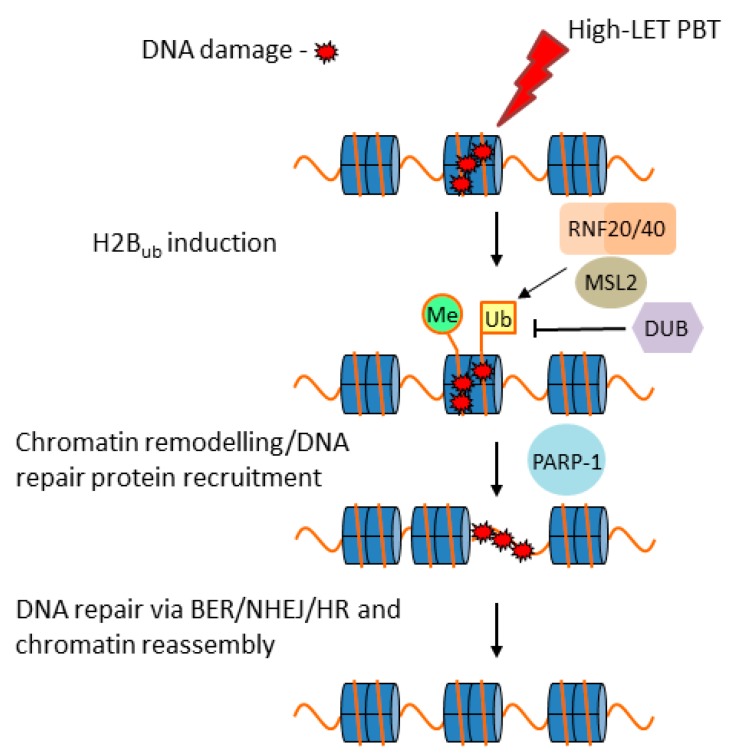Figure 3.
Proposed model for the cellular response to complex DNA damage (CDD) induced by proton beam therapy (PBT) in chromatin. On induction of CDD, this triggers monoubiquitylation of histone H2B on lysine 120 (Ub) by the E3 ubiquitin ligases ring finger 20/40 complex (RNF20/40) and male-specific lethal 2 homolog (MSL2). This stimulates recruitment of the necessary DNA repair proteins and/or chromatin remodeling factors that promote CDD accessibility. Poly(ADP-ribose) polymerase-1 (PARP-1) in particular is essential for efficient CDD repair. Our evidence also suggests the involvement of histone trimethylation (Me) and predictably a deubiquitylation enzyme (DUB) that is able to regulate access to CDD. Repair then proceeds through the respective DNA repair pathway dependent on the nature of the damage, although we suggest a particular dependence on the base excision repair (BER) pathway in the cellular response to high-LET protons, prior to subsequent chromatin assembly.

